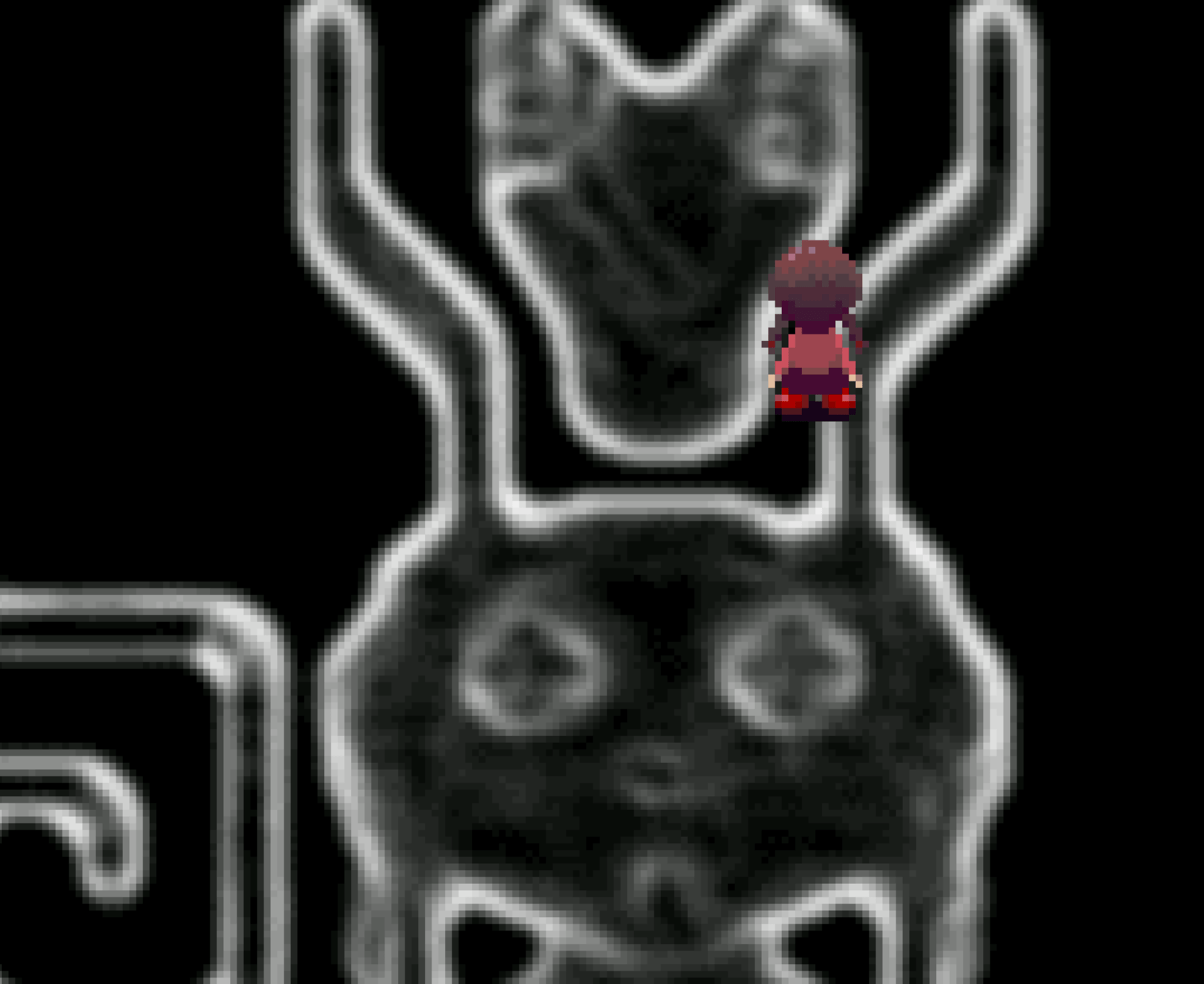Critical Play of Yume Nikki
Last night, I played Yume Nikki, a game by developer kikiyama and published by PLAYISM intended for what I’d assume to be a teen or young adult audience due to the imagery of the game. In the game you traverse a land of bizarre landscapes as you explore “the extremely dark world inside a dream.” (citation: Yume Nikki steam page). I would argue that Yume Nikki contains intentional visual and auditory clues to both disturb and calm its audience, and that this disposition is used to counteract the “boring” trap that many walking games seek to escape.
You begin the game in Yume Nikki’s bedroom where you are able to walk outside the room to an apartment patio and interact with a few items in your bedroom. When you get in your bed and begin dreaming, a second door in your room becomes accessible which leads you to a dark room full of other doors that lead to other landscapes with different music and settings. Most of these doors have extremely unsettling landscapes. For instance the first door I opened, thinking it looked like a speaker, placed me in a dark room which was full of eyeballs. Personally, this made me want to die a little and I immediately left. The majority of the rooms had very unsettling music and were visually very scary due to a completely black background usually decorated with creepy items/organisms and giant unexplainable figures that floated across the room (pictured).
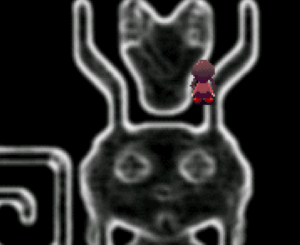
I think that the darkness of these rooms and eery/strange figures were a very distinct choice to make players feel unfamilarized with the environment and uncomfortable, while the eerie music was the cherry on top of this sensorially creepy experience. Oh my god the figures were so strange and weird. At one point I saw one that looked like a human but it was just off and it made me really uncomfortable.
Despite this, there were several aspects of the game which seemed to counteract the creepiness of the game and provide comfort to the player. The fact that despite the settings being creepy at times, anything you interacted with couldn’t kill you lended itself to the sub-genre of a walking game which, this week’s reading author Nicole Clark categorizes as lacking “puzzles or any sort of barrier to experiencing the narrative.” As a player, I agree that the ways that the these objects did not react to me made me feel more uninhibited in my exploration; I did not feel forced to avoid creepy objects which otherwise visually implied they might hurt me if I got to close. This eventually lead me to go back to the eyeball room and chill with a group of the eyeballs (pictured below).
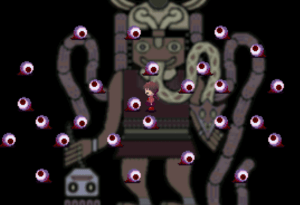
There were very few items you could interact with in the game, but all of them seemed to be there to illicit joy from the player. For example, when I explored the eyeball room a big more, I found a face with big lips and I was able to kiss it and have a kissie noise play which downplayed the creepy vibe of the room. In another room too, despite a floating figure that appeared to have some of its organs leaking out, I found myself surrounded by tiles that would play a noise when I ran over them, causing me to happily interact with the world to make little songs in this otherwise scary room. Similarly, in every room if you wandered enough you found a little bed like the one in your room, which you could hop in and disappear under the covers as long as you wanted. This evoked a feeling of comfort in me which I think was the intention behind placing it in all of these rooms. (Bed pictured below where I hid from a giant floating figure when I first started playing)
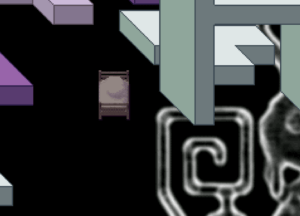
Some rooms too seemed overall made to be less unsettling than others. For instance, one room had a bunch of neon figures just dancing around the whole map which made me feel a lot less tense and more joyful. Another, was a soft white and blue snowy land with snowfall which instantly made me feel at ease. To take it a step further, in this room I found a little igloo which allowed me to enter a small room with just me and some know which felt like a relaxing break from the scariness I’d been encountering (pictured below).
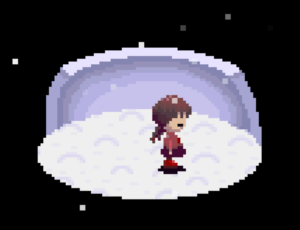
However directly outside this igloo was the unsettling human but not human figure I described earlier, which confirmed my suspicions that there is intentional placement of both settling and unsettling visual and auditory queues scattered throughout the game. Overall good game but I just wasn’t able to explore enough to progress very far…Such is the fate of limited playtime in a walking game! However, I found myself alert the whole time so I consider this another proof of my hypothesis that the game combines sensory communicators comfort and disturbance in order to be successfully interesting as a walking game without the actions of other genres of games.


